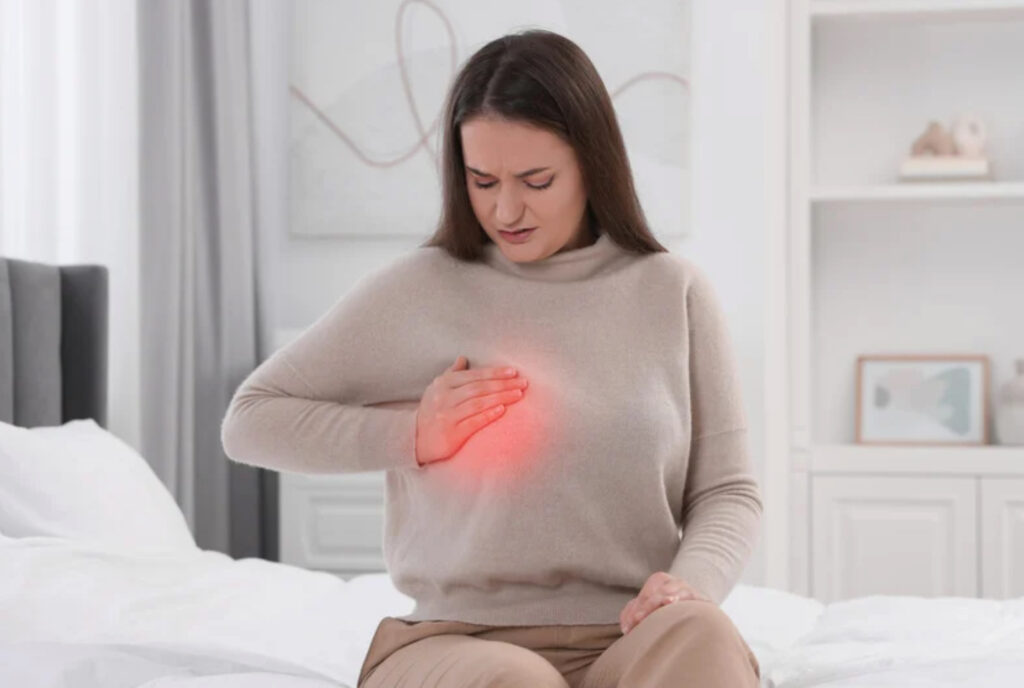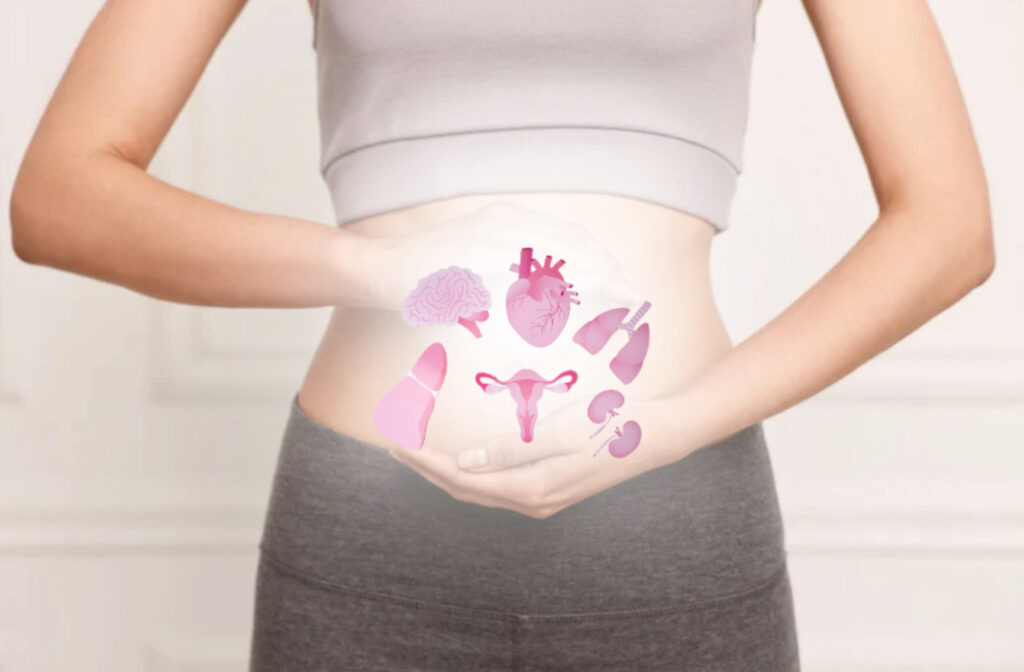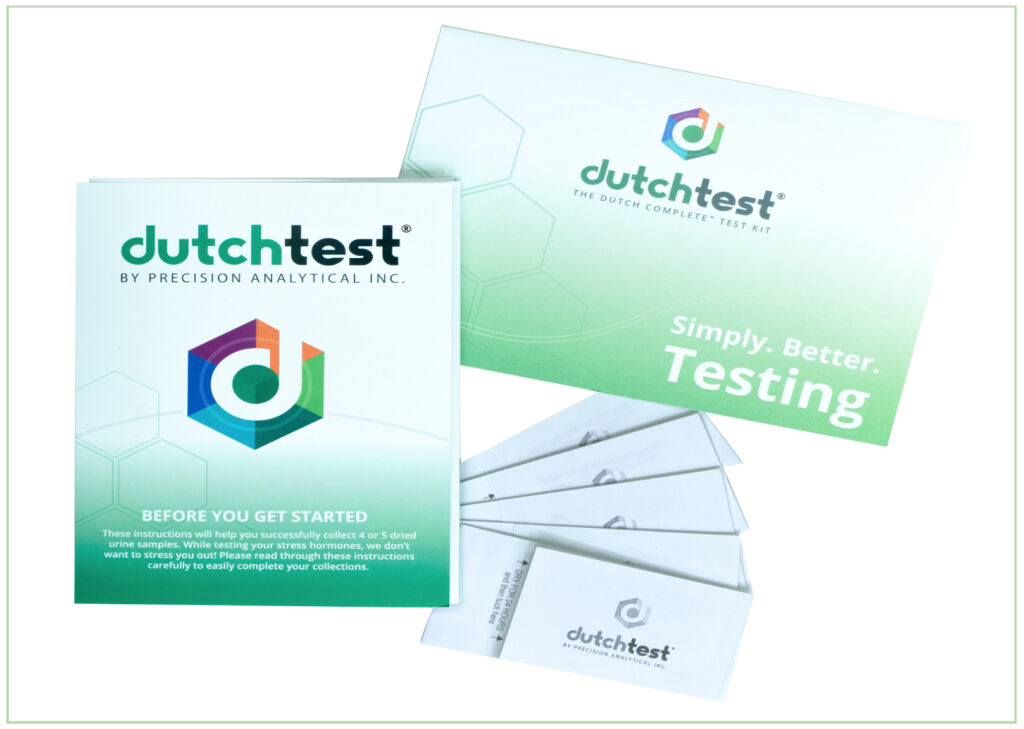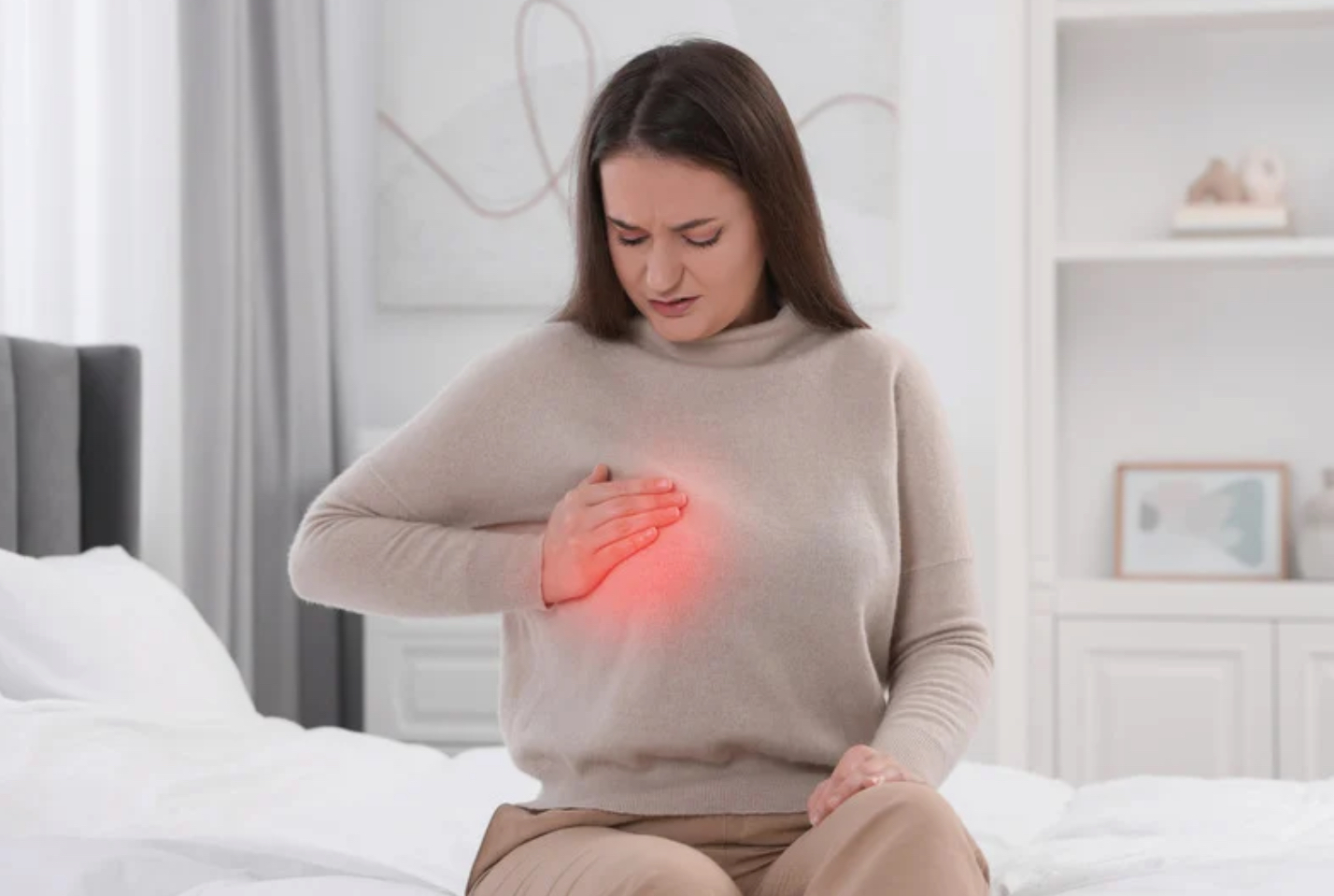Understanding the Real Connection Every Woman Needs to Know
If you’ve ever felt your breasts becoming tender, swollen, or just “different” around your cycle, you might’ve heard someone say, “It’s because your estrogen is too high.”
But here’s something many women aren’t told: it’s not just about how much estrogen you have — it’s about how your body handles it AND whether you have enough progesterone to balance it out.
As women, we often go through seasons of hormonal change — from our 20s to perimenopause — and each phase brings its own set of challenges. Understanding how your body processes hormones can change the way you experience those shifts and, more importantly, help you protect your breast health in the long run.
Estrogen Isn’t the Enemy
Estrogen is a powerful and essential hormone- for every part of the body.. It helps maintain bone strength, keeps your skin youthful, supports your mood, your bones, and even gives your breasts their fullness.
Let’s be clear: the estrogen God designed for your body does NOT cause cancer. What matters is how your body breaks it down, and whether it’s properly balanced with progesterone.
The problem isn’t estrogen itself — it’s when your body can’t clear it efficiently or sends it down the wrong pathways.
Think of it like this: imagine you have a kitchen sink that drains slowly. If you keep pouring water in, it eventually overflows. That’s what happens when your liver or gut isn’t detoxifying estrogen properly — it builds up and starts to cause problems.
You might notice symptoms like:
- Breast tenderness or heaviness
- Fibrocystic or lumpy breasts
- Mood swings before your period
- Bloating or water retention
- Heavy periods

These are early signs that your body needs a little more support in processing hormones.
The Real Issue: Poor Hormone Metabolism
Your liver and gut play a huge role in keeping your hormones balanced. When they’re overworked or sluggish, estrogen tends to circulate longer than it should — and that’s when symptoms appear.
This can happen for many reasons:
- Chronic stress: high cortisol levels throw off estrogen-progesterone balance.
- Poor diet: too much processed food or sugar can burden your liver.
- Lack of nutrients: vitamins B6, B12, and magnesium are needed to metabolize hormones properly.
- Gut issues: constipation or poor digestion can cause “used” estrogen to be reabsorbed into the bloodstream.
When this happens, it can make your breasts feel sore, swollen, or dense — and over time, increase your risk for more serious imbalances.

Understanding Your Estrogen Pathways: The Good, The Bad, and The Ugly
Here’s where it gets really interesting — and this is information that can truly change your life.
When your body processes estrogen, it doesn’t just “get rid of it.” Your liver breaks it down through three different pathways. Think of these like three different roads your estrogen can travel down:
The 2-OH Pathway: The Healthy Road
This is the pathway you want your estrogen to take. When estrogen goes down this road, it becomes a protective form that actually helps guard your breast tissue. This pathway is associated with lower breast cancer risk and fewer symptoms.
Think of this as the “safe route home” for your estrogen.
The 16-OH Pathway: The Bad Road
This pathway creates a stronger, more aggressive form of estrogen that can overstimulate breast tissue. When too much of your estrogen goes down this road, it can lead to:
- More breast tenderness and swelling
- Heavier periods
- Fibrocystic breasts
- Increased tissue growth
This isn’t the worst pathway, but it’s not the one you want most of your estrogen traveling down.
The 4-OH Pathway: The Ugly Road
This is the pathway that causes real concern. When estrogen breaks down through this route, it creates forms that can actually damage your DNA. Research shows that these 4-OH estrogen metabolites can cause oxidative stress and DNA damage in breast tissue, which over time may increase cancer risk.
This is the road you definitely want to keep your estrogen away from.
Here’s the Critical Point: Your body naturally makes estrogen — and that’s a beautiful, God-given design. The estrogen itself isn’t dangerous. What matters is which pathway your body sends it down and whether you have the nutrients and support to process it safely.
When women are told “estrogen causes cancer,” what’s really happening is poor estrogen metabolism — specifically, too much going down the 4-OH pathway and not enough going down the protective 2-OH pathway.
The DUTCH Test: Getting to Know Your Hormones
When I first learned about the DUTCH Test (short for Dried Urine Test for Comprehensive Hormones), it honestly felt like someone turned the lights on.
So many women get frustrated when they’re told their hormone labs are “normal” — yet they still feel exhausted, moody, or tender in their breasts. That’s because regular tests only measure how much hormone you have in your system. They don’t show how your body is using or clearing it.
Here’s why the DUTCH Test is so eye-opening:
- It tells you where your estrogen is going. This is huge! The DUTCH Test actually shows you how much of your estrogen is going down each of the three pathways — the healthy 2-OH, the ugly 16-OH, and the bad 4-OH route. When you can see exactly which road your estrogen prefers, you know exactly what to support.
- It gives a full hormone snapshot. It measures more than just estrogen — it also includes progesterone, testosterone, DHEA, and cortisol (your stress hormone). This helps you see the bigger picture of how stress, sleep, and diet all work together to affect your hormones and breast health.
- It takes away the guesswork. Instead of trying random supplements or diets, you’ll know exactly what your body needs. Whether it’s supporting your liver to push more estrogen down the healthy pathway, calming your stress, or improving gut health, the insights are clear and actionable.
- It shows you what’s happening behind the scenes.The DUTCH Test also measures something called “organic acids” — which sounds technical, but here’s what it means for you: it reveals whether your body has enough of the essential vitamins and nutrients needed for healthy hormone balance, a calm nervous system, good gut health, and strong detoxification.

These measurements show if there might be hidden problems in any of these areas that need attention — like missing puzzle pieces that have been making it harder for your body to process hormones well.
I’ve seen women feel an incredible sense of relief when their results finally explain what they’ve been feeling for years. It’s not “in your head” — it’s in your hormones, and the DUTCH Test helps you see it clearly.
Why Progesterone Balance Matters Too
Now here’s another piece of the puzzle that’s equally important: even if your body is metabolizing estrogen well, you still need enough progesterone to balance it out.
Think of progesterone as estrogen’s partner. While estrogen builds and grows tissue (like breast tissue), progesterone helps protect and calm things down. When you don’t have enough progesterone compared to your estrogen, doctors call this “relative estrogen dominance.”
Here’s what’s really important: it doesn’t matter where your estrogen comes from — the balance still matters:
- Your body’s own natural estrogen (God’s design)
- Bioidentical hormones (BHRT)
- Synthetic estrogens (like birth control pills)
- Xeno-estrogens (fake estrogen-like chemicals from plastics, pesticides, and personal care products)
All types of estrogen need to be balanced with progesterone. Research shows that progesterone helps protect breast tissue and counteracts some of estrogen’s growth-promoting effects. What’s critical to understand is that while balancing is important, getting rid of toxic xeno-estrogens and synthetic hormones is even more urgent — these foreign chemicals are much harder for your body to clear and can create serious problems when they build up.
You can have perfectly normal estrogen levels AND be metabolizing it well — but if your progesterone is low, you’ll still have symptoms. It’s like having a seesaw with two kids of different weights. Even if neither kid is extra heavy, the seesaw won’t balance if one is heavier than the other.
This is why both pieces matter: how your body breaks down estrogen (which pathway it takes) AND whether you have enough progesterone to balance whatever estrogen is there.
Simple Ways to Support Healthy Estrogen Metabolism
Now that you understand the three pathways, let’s talk about how to help your body send more estrogen down the healthy 2-OH pathway and less down the ugly 16-OH and bad 4-OH pathways.
You don’t need a long list of complicated steps. Most of the best strategies are simple and sustainable.
Here are practical ways to support your body every day:
- Eat your greens — especially cruciferous vegetables. Broccoli, kale, Brussels sprouts, and cauliflower contain special compounds called indole-3-carbinol (I3C) and DIM (diindolylmethane) that specifically help push estrogen down the healthy 2-OH pathway. Aim for at least one serving daily.
- Be kind to your liver. Your liver is the main organ that decides which pathway your estrogen takes. Drink plenty of water, limit alcohol, and choose whole foods. A happy liver makes better decisions about your hormones!
- Take care of your gut. Aim for one to two bowel movements a day. A healthy digestive system helps your body get rid of “used” estrogen and prevents it from recirculating back into your bloodstream where it can cause trouble.
- Get enough antioxidants. Vitamins C and E, along with nutrients like glutathione and N-acetylcysteine (NAC), help protect against the DNA damage from the 4-OH pathway. Colorful fruits and vegetables are your friends here!
- Support methylation. This is a fancy word for a process that helps neutralize harmful estrogen metabolites. B vitamins (especially B6, B12, and folate) and magnesium support this process. These nutrients help “clean up” any estrogen that went down the wrong pathway.
- Manage stress in small, daily ways. Even a few minutes of deep breathing, journaling, or stretching can make a difference. Stress hormones can directly affect which pathway your estrogen takes and can steal the building blocks your body needs to make progesterone.
- Move your body. Exercise supports circulation and detoxification, which helps your body clear estrogen efficiently. It doesn’t have to be intense — consistency is what counts.
- Reduce xeno-estrogen exposure. Choose glass or stainless steel instead of plastic containers, buy organic when possible (especially for produce), and choose cleaner personal care products. Every bit of extra estrogen-like chemical you avoid helps your body handle your natural estrogen better.
- Consider targeted supplements. Depending on your DUTCH Test results, supplements like DIM, calcium-d-glucarate, or milk thistle can help support the healthy pathways. But it’s always best to test first so you know exactly what you need.

These habits may seem simple, but together, they create a foundation for lasting hormone balance — and healthier, happier breasts.
Listening to Your Breasts
Our breasts often reflect what’s happening inside us — physically and emotionally. Tenderness, swelling, or lumps can sometimes be your body’s way of asking for more rest, less stress, or better nourishment.
Instead of brushing off those signs, take them as gentle reminders. Your body is incredibly wise — and it communicates through how you feel.
Final Thoughts: Awareness is the First Step
Understanding your hormones isn’t about fear — it’s about awareness and self-care. When you learn how your body metabolizes estrogen — which pathway it takes — and whether you have enough progesterone to balance it, you’re not just caring for your breasts — you’re protecting your mood, your energy, and your overall well-being.
Remember: God-given estrogen is not your enemy. It’s a beautiful, essential hormone. What matters is giving your body the support it needs to process it safely down the healthy pathway.
If you suspect estrogen dominance might be part of what you’re experiencing, you can start by taking my FREE Hormone Quiz to get a sense of your hormonal type and what might be out of balance.
Because your body isn’t broken — it’s just asking for understanding and balance.. Once you learn how to listen, everything starts to make sense.


